When one considers that the birth of American comics lasted, roughly, from 1933 to 1938, and peaked with the myth of Superman, it is not surprising that Roberto Matta’s interest in comics was, so to speak, of the first hour. And on the other hand, it is even less surprising that Clement Greenberg, the most important American critic of the avant-garde era, publishing precisely in 1939 in the “Partisan Review” the essay Avant-Garde and Kitsch had taken the Chilean painter in dislike precisely because of certain affinities with the language of comics, which the critic saw as smoke and mirrors, considering it an almost total manifestation of kitsch (and a concomitant of the social crisis that actually fostered the moral crusade against comics after the end of World War II, as one of the scapegoats of a youthful malaise symptomatized by comics and drugs: and since 90 percent of young people at the time read comic books, it seemed an obvious cause of social malaise).
Matta was aware of this relationship that art came to establish with kitsch: it was, in fact, the new tool that told stories in a bizarre and grotesque language. The kitsch that the artists were interested in was meant to be a critical move toward the contemporary world. But the outcome was that, in a mass culture, if you abide by its rules, you get sucked in: that’s what happened later with Pop Art, granted that the intent of Rauschenberg, Lichtenstein and Warhol was criticism of consumer society.
Meanwhile, Greenberg’s avant-garde embodied a very American idea, classical in its way, where art gains its own dignity insofar as it expresses a native feeling (as happens in Pollock, for example), but Greenberg’s same argument could apply with Raphael, the classic of classics. And it is on this conviction that the American critic bases his anti-academic battle by arguing, perhaps surprisingly, that " kitsch is academic, and everything academic is kitsch. " Along these lines he stigmatizes precisely the rear-garde, the rearguard. What does Greenberg seek to testify to? The shame of aristocratic America of European heritage which, starting from its own elitist taste, judges the products of mass culture, and in the specific case comics, the expression of a “popular, commercial, illustrative, low” taste. To combat midcult, the abstract avant-garde will become in Greenberg’s eyes the classical moment that denies figurative academicism and opposes mass culture because it expresses the aesthetic prosaicity to which, in effect, every form that seeks a creative space is exposed. Moral of the story, creating, in consumer society, pushes even the most astute and conscious artist toward kitsch.
Matta, fresh out of architecture, went to Paris at twenty-three where he met the likes of Rafael Alberti and Federico García Lorca, joined Le Corbusier’s studio, and then joined Surrealism where he elaborated his own aesthetic coefficient through the concept of “psychological morphology.” The world prepares to explode in a new war, and Matta meanwhile travels Europe meeting other major players, from Moore to Dalí and Magritte to De Chirico. Shortly before the war begins, Matta decides to travel to the United States. Being modern seems to mean espousing a language that refuses to adhere to the imitation of reality as preached in the academies; or, that goes beyond the classical idea of reality, shifting its references into psychic space, according to the new psychoanalytic parameters. Manifestos and thoughts that consider any language that relies on figuration as academic are multiplying. America is the heartland, across the Ocean, where the new verb is preached. After etching on the Armory Show, America’s first exhibition-fair of independent art, after calling for a furious aesthetic for new art, which has its sacred icon in a public restroom pisshole, after mounting the case of Bird in Space, a Brancusi sculpture stopped at the customs d’overseas to be taxed as a common artifact and not as a sublime work of art; here Duchamp has become the holy man of the American intelligentsia who will impose the new myth at the turn of the two world wars: abstract and minimal art.
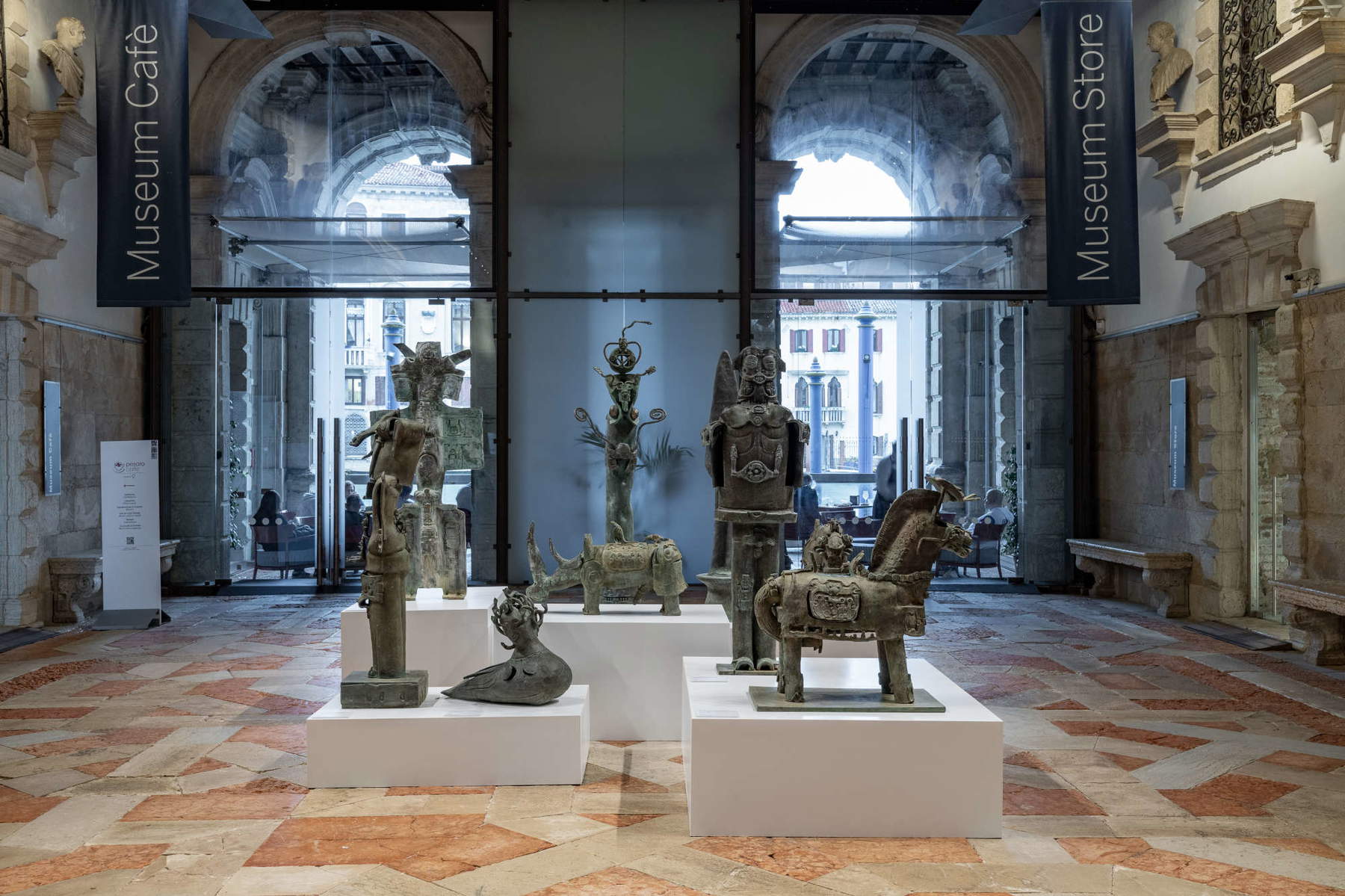
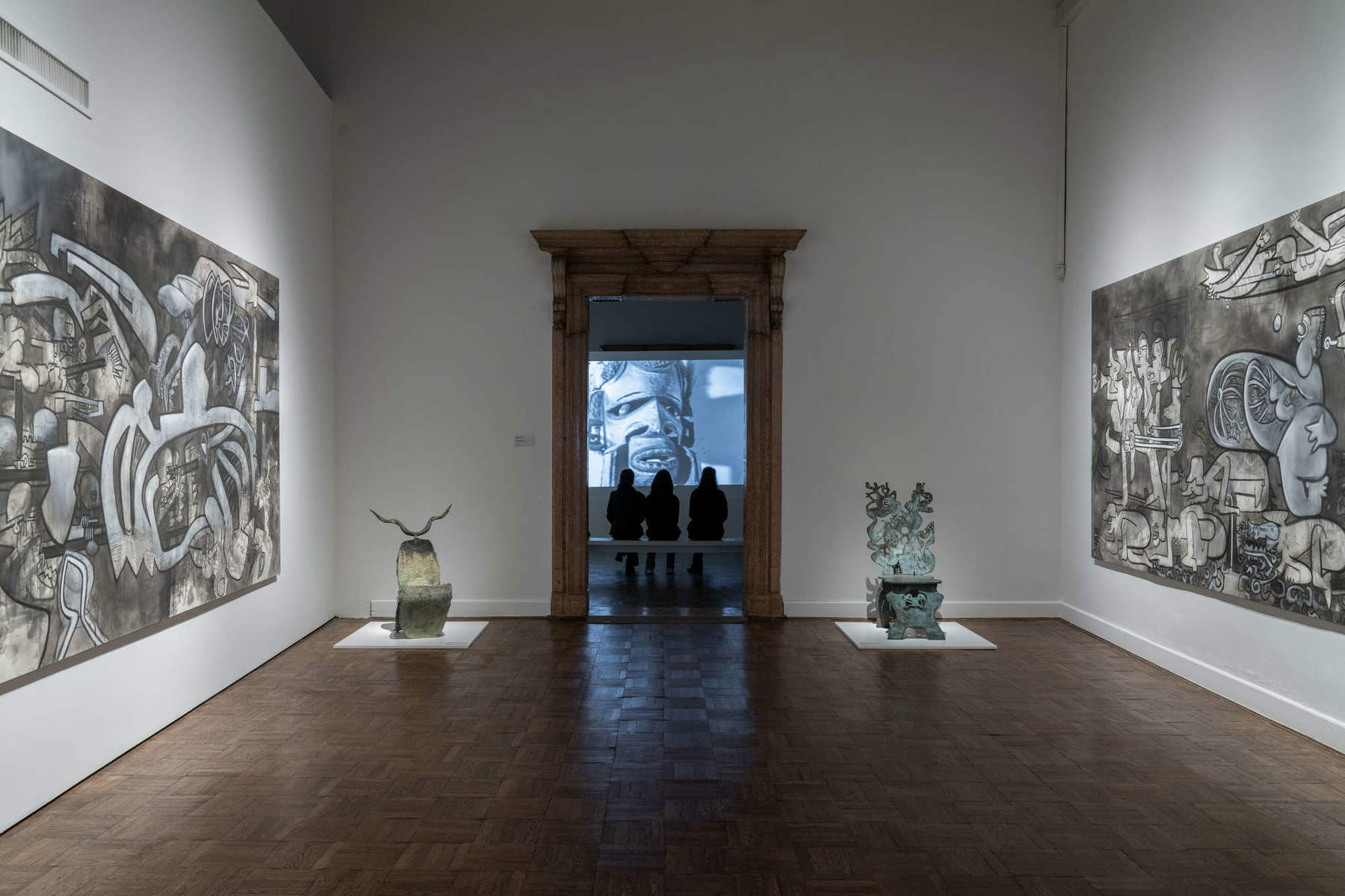
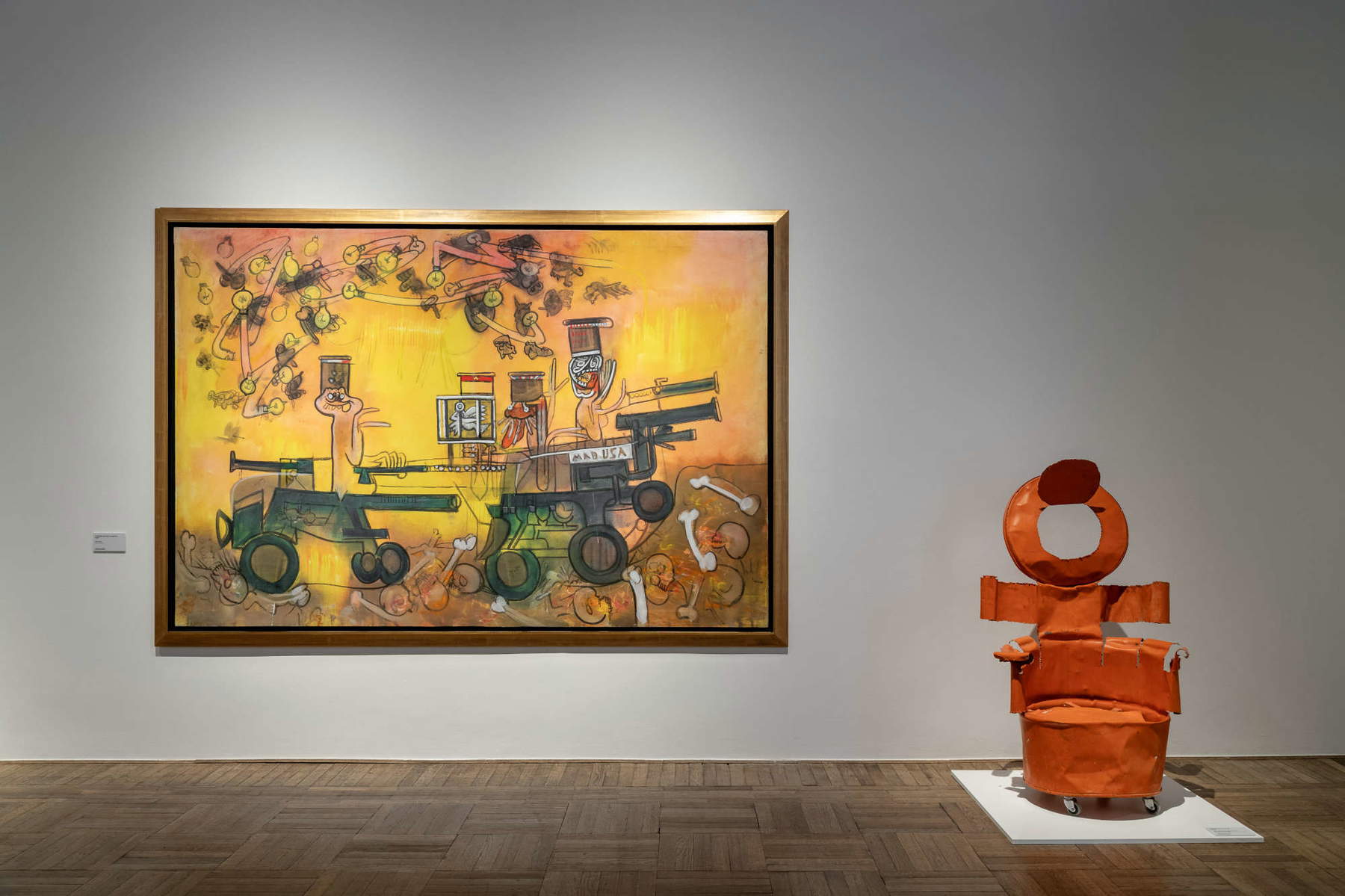
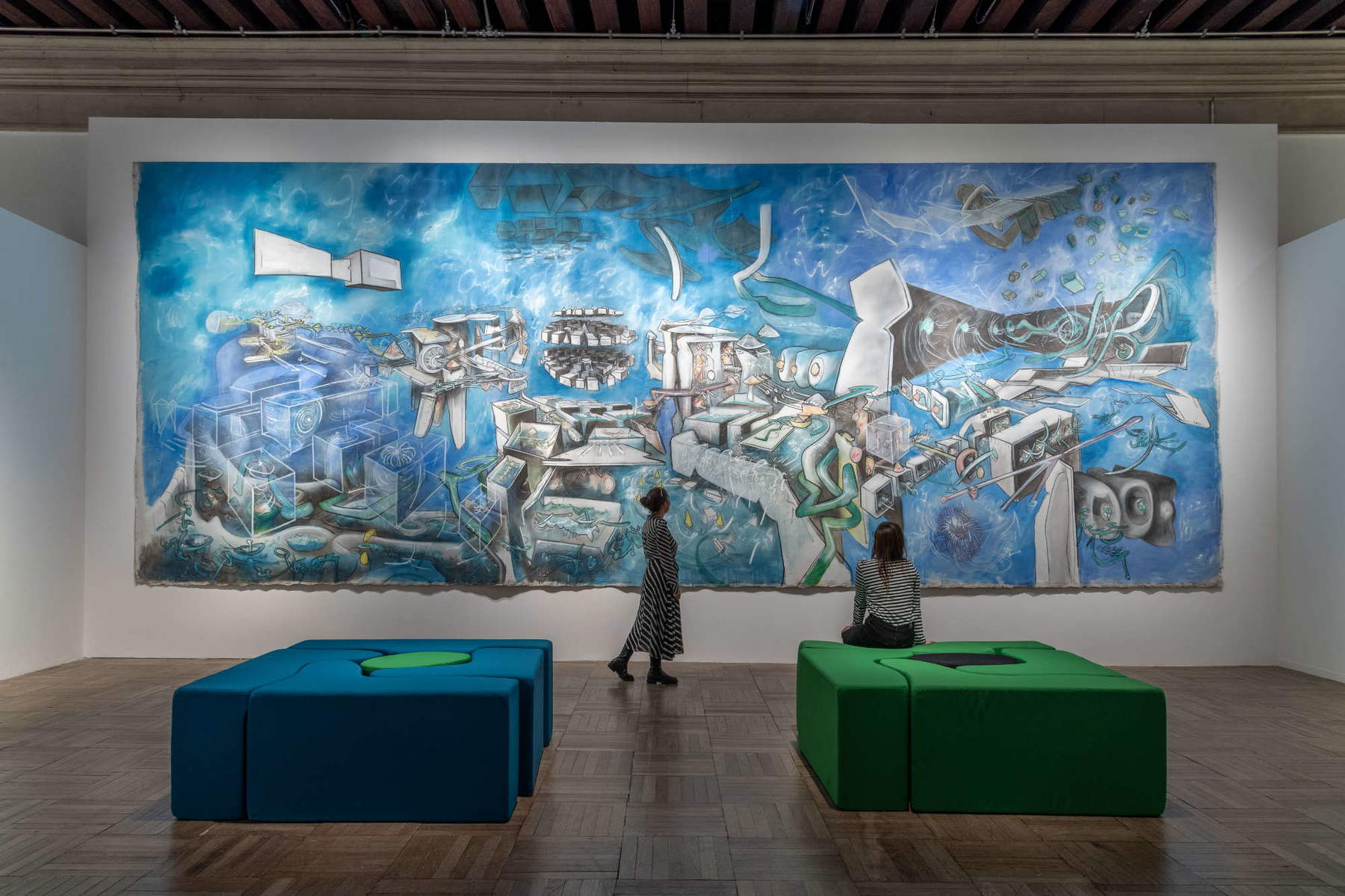
American Abstract Expressionism will also from the beginning and forever be a mystique of art, with moments of true spirituality and others of brute immanence. But kitsch is something else entirely: today, for example, it is no longer a style, it is no longer an aesthetics of the object, it is, we might say, a culture that no longer acts from a perspective of good and evil (the bad taste that corrupts), but celebrates the present as indifference to being, because culture itself is now nothing more than communication beyond moral constraints. The model that comes closest to him is the Trickster, the malevolent genius who in primitive and mythical societies destroys or discredits in order to assert his underlying principle: culture is a constant upheaval that demolishes in order to rebuild; undermining any presumption of future and, conversely, forcing the angel of History to move forward with his gaze turned toward the past so as not to fall into the black hole.
But this is not the kitsch Greenberg intends, still too culturally conditioned by an oppositional idea of past and future. He echoes the thinking of Dwight Macdonald, the sociologist author of the famous Masscult and Midcult. Kitsch - for the two American critics - is the midcult that dominates a certain kind of popular literature, illustrations, advertising, magazine covers (such as those of Norman Rockwell, which were considered “romantic realism”), Hollywood and, therefore, comic books. Where is the critical point? In the difficulty of getting rid of kitsch because it “has the ability to tell a story, to propose an obvious and immediate meaning that requires no effort on the part of the viewer.” Can we say, today, that Roberto Matta’s painting makes the viewer so passive?
When Macdonald accused the Soviet Union of training the masses in a socialist realism whose spokesman would be Il’ja Repin, “a leading exponent of Russian academic kitsch in painting,” he had actually opened up that ideological clash of cultures that will take shape in the Cold War where one is measured on the ability to discredit the enemy. According to Macdonald (and Greenberg), no, the Russians of that time do not tell us: if the masses flocked to the Tret’jakov Gallery (Moscow’s museum of Russian art-where, for example, Andrei Rubl’ëv’s Trinity, the painting that at the Russian Council of 1551 was named “the icon of icons”), is because they had been brainwashed to avoid abstract “formalism” in order to admire “socialist realism.” Old story: the CIA implements critical thinking toward the Soviets by supporting the abstract expressionists of the New York School, the irascibles, so that they would counter the overpowering painters of Sovietism. New Yok is poised to become the planetary capital of contemporary art thanks to the propositional machine put in place by the leading country among the victors of the war. The New York School has Peggy Guggenheim as its godmother, who holds a christening in the gallery opened in 1942. The names are well known: Dutch De Kooning, Russian Mark Rothko, Armenian Arshile Gorky...Pollock, Motherwell, Clyfford Still, Baziotes, David Smith, Barnett Newman, etc. These are the years where the group becomes internationally known, and Matta, who has relations with them, played his influence on Pollock himself and Gorky. Motherwell will say that, without Matta, the group would never have existed.
The task critics like Greenberg feel invested with is to wake up the masses: Macdonald wishes for the subversion of the common man. But if kitsch, at the time, manifests itself, according to the American critic, as a typical product of totalitarian states, it is not only because of the lies they peddle to the people, but because kitsch has already taken over mass culture in the various countries. It is turning into a kind of conceptual exoskeleton of the coming technological revolution. A hyperbolic assertion, belied at the time of Greenberg’s essay by the very debate about the arts in the 1930s and 1940s in Italy, perhaps precisely because that “cultural leveling” that the regimes set out to achieve and that will instead be accomplished by the postwar democracies had not yet taken place. But, in fact, it is remarkable insight that Macdonald himself outlines as early as the 1950s that what he says is being accomplished right at home, in the Capitalism that passes itself off to the world as the champion of democracy and the system for solving all conflicts, because what is happening is that “advances in culture, science and industry corrode the very society that made them possible.” It can be said without mistake that this is what has happened in the last half century throughout the advanced world, democratic and otherwise. Capitalism has made kitsch its communicative face, its idiom, the most effective dream machine for manipulating the masses: the norms governing the inseparable relationship between production, consumption, democracy and social language lead to the sublimation of kitsch into a “superior product.” a mental condition that heralds another world where the tragic and the playful are equivalent because everything becomes virtual (as is happening with ChatGPT) and non-truth carries the same weight as truth, with no clear discernment coming any more.
First, however, there is the stage of pure immanence, which could also dispense with critical judgment. Greenberg enumerated his champions of the game against kitsch: Picasso, Braque, Mondrian, Kandinsky, Brancusi, namely Klee, Matisse and Cézanne. The originality of their artistic production, the critic argues, lies not in the stories it tells, but in the organization of spaces, surfaces, forms and colors. It is immanence in its pure state. Art loses its objecthood as literacy makes the use of manual and practical skills less necessary (this is what has since happened in labor, undermining a system where working was not only a necessity for survival but had a psychological value, that, perhaps surrogate but real, of creativity, thus motivational and foundational to the kind of society that expressed it). The urbanized masses, moving away from the rural context, have lost their taste for folk culture, and have created a new market for mass consumption of cultural, commercial and commodified products, the language of which manipulates consumer thinking: kitsch is no longer in things, an aesthetic expression, but is within each of us. Our current condition, announced eighty years earlier.
If even in Roberto Matta’s painting insists a suspicion of programmed kitsch, the Venetian retrospective mounted until March 23 at Ca’ Pesaro and introduced by Norman Rosenthal, leaves no doubt that his painting belongs to the avant-garde side dear to Greenberg, who, however, from the beginning looked at him with suspicion precisely because of the declared attraction that Matta never hid toward comic strips: an interest discovered precisely during the stay in the States that from 1939 lasted until 1948, as Gavin Parkinson (Silvana editoriale) recalls in the exhibition catalog.
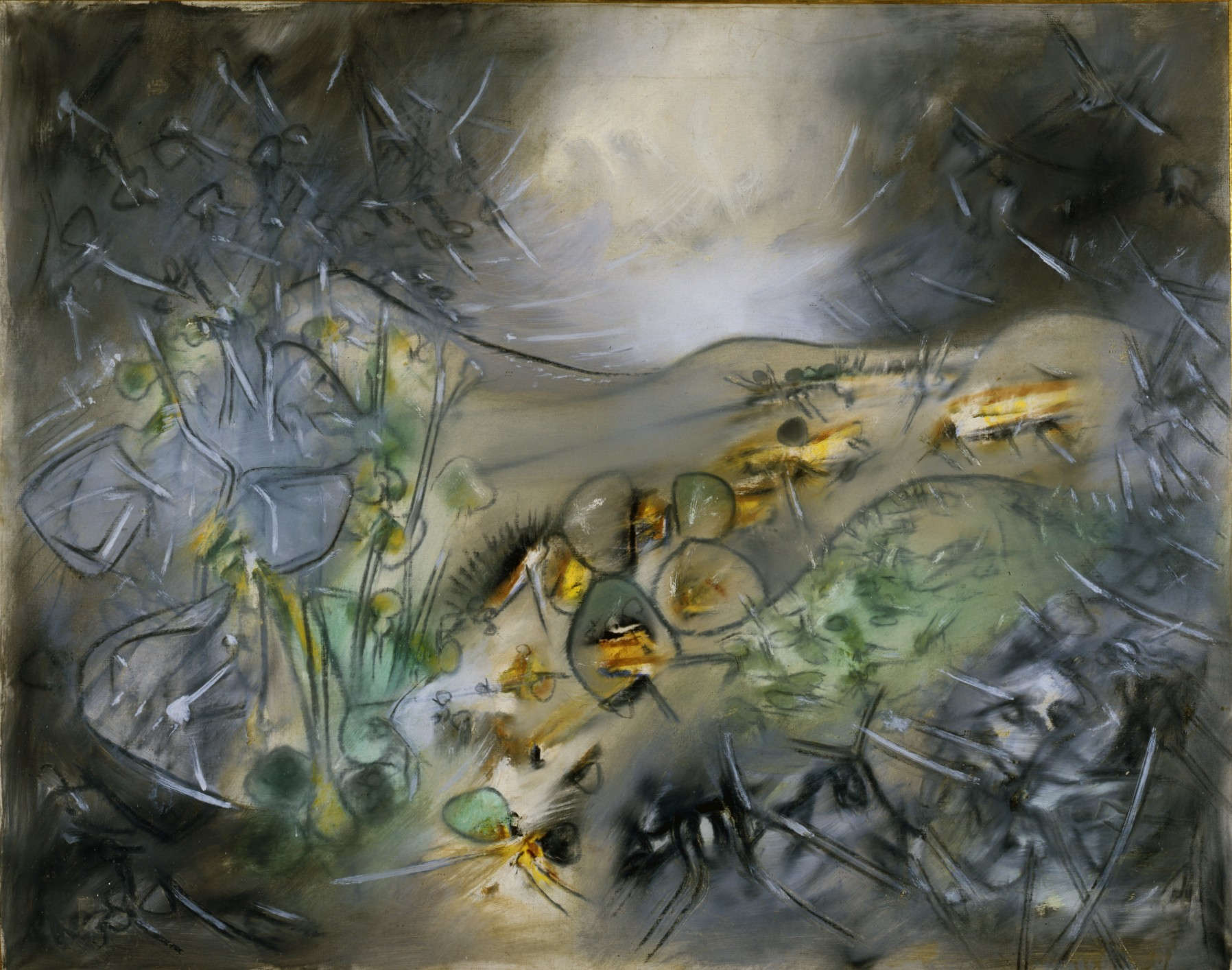
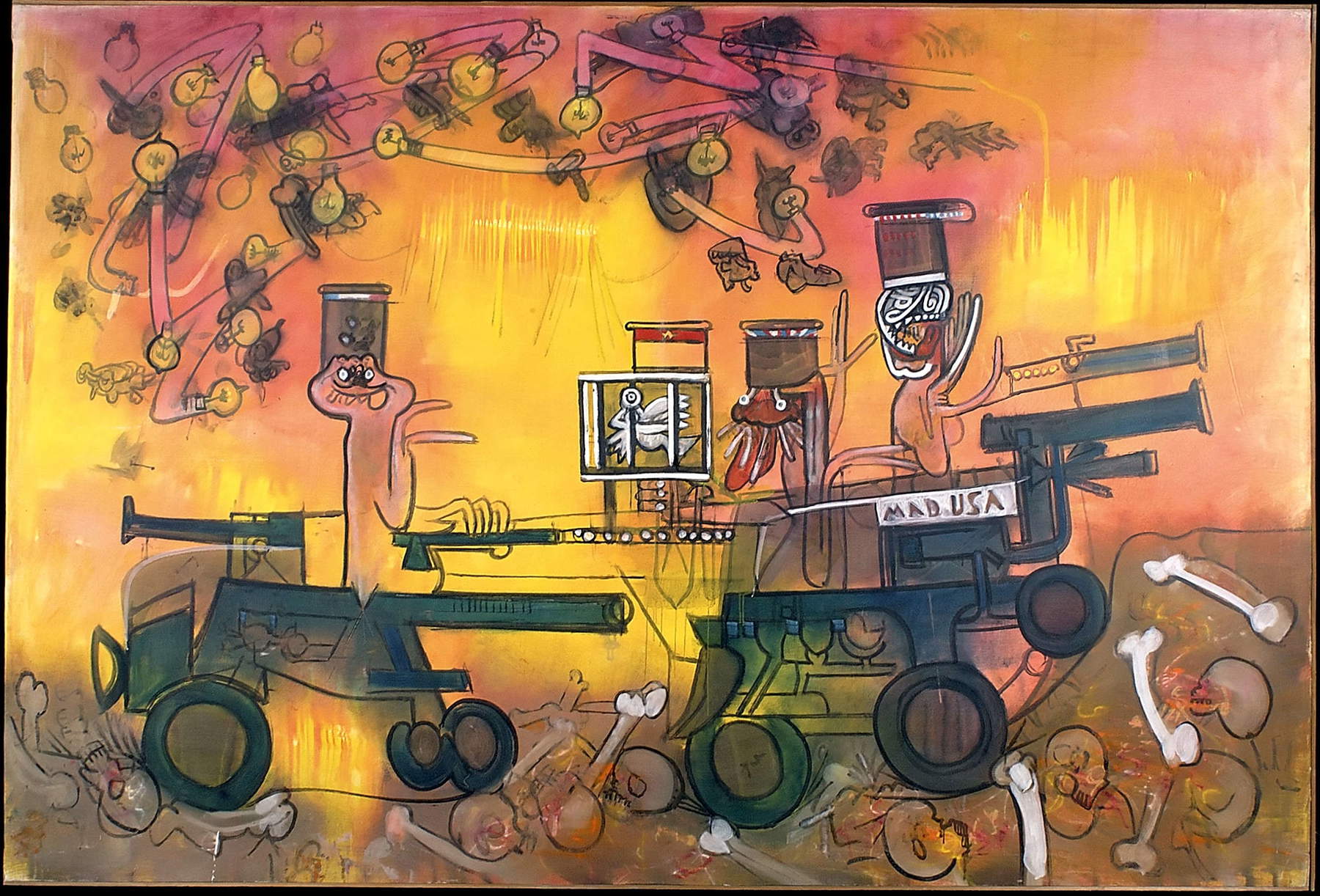
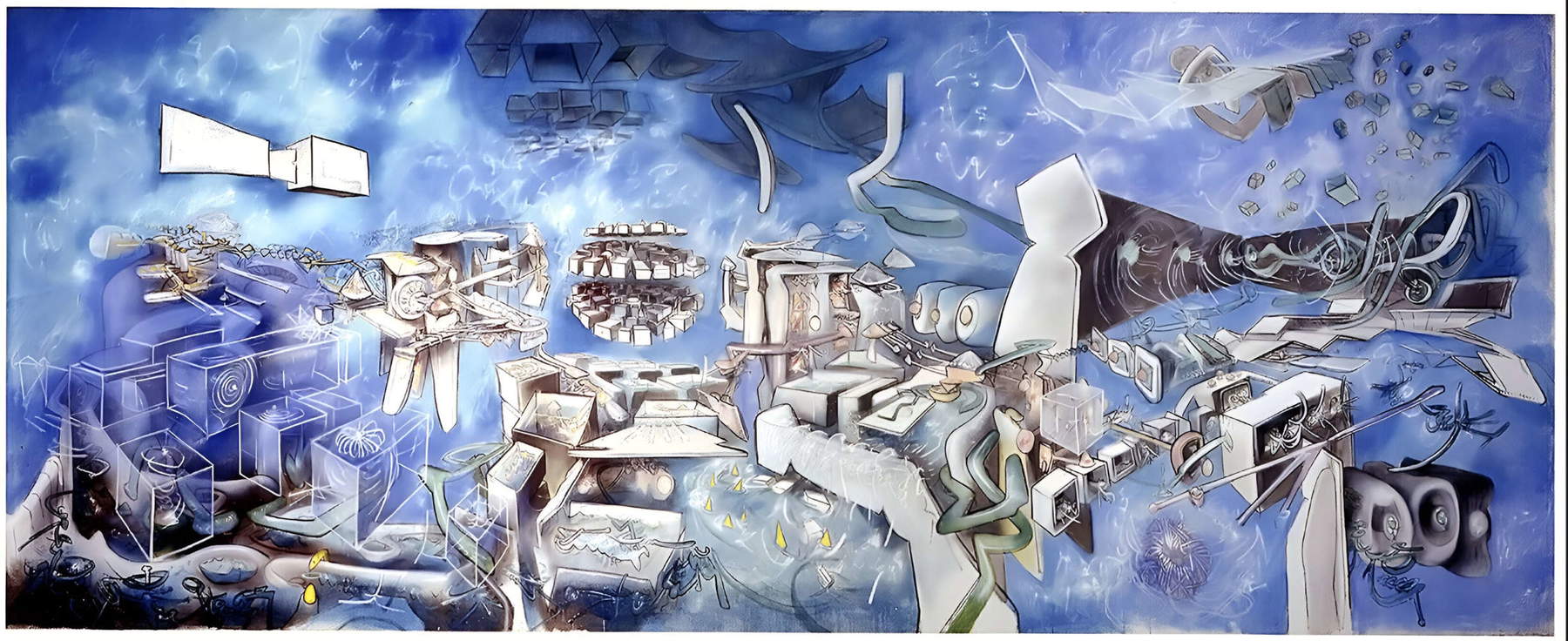
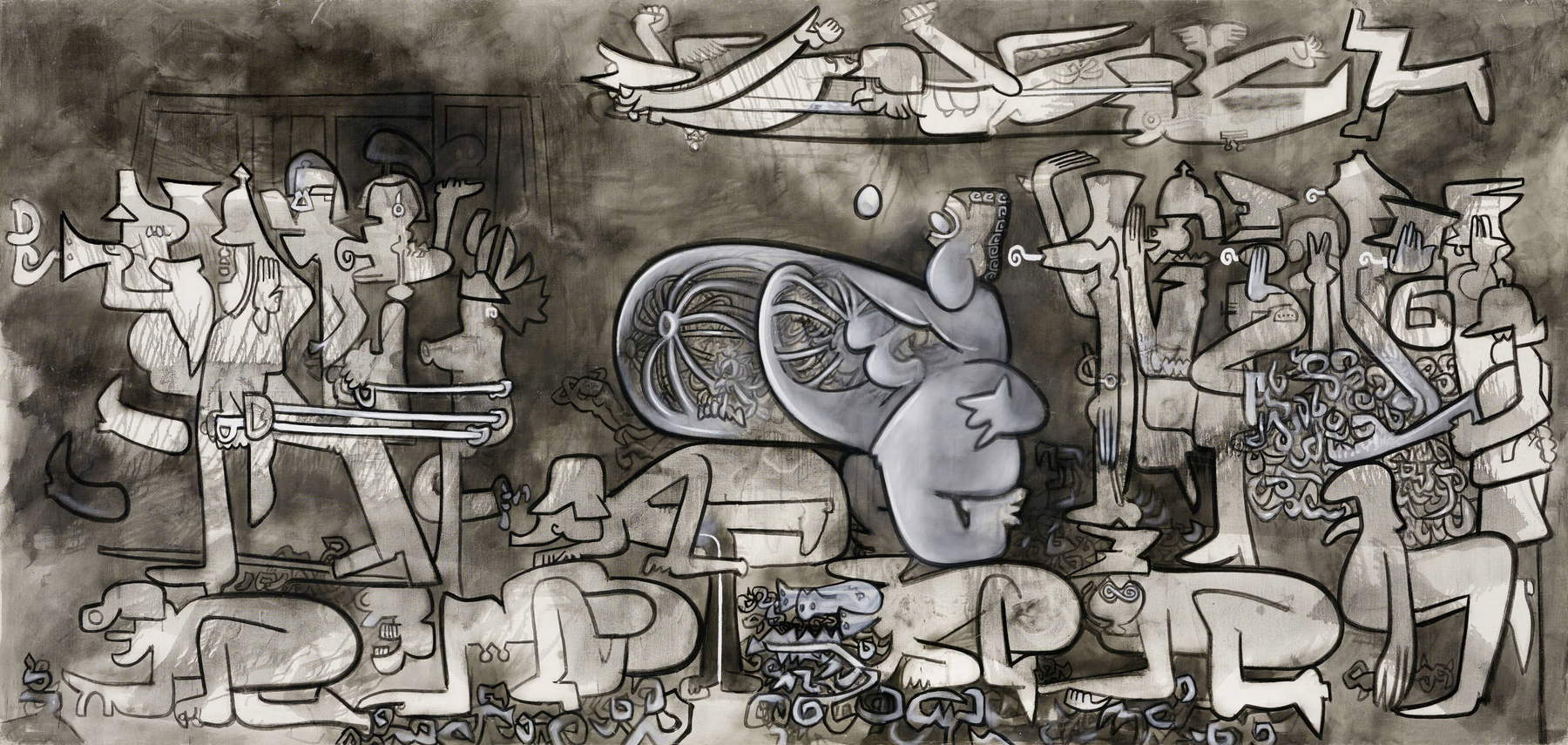
Matta’s main references were two of the most celebrated names in twentieth-century avant-garde art: Duchamp and Picasso. Neither can be accused of academicism, yet one can feel in the watermark of their poetics the permanence of a classical thought and at the same time a seduction toward kitsch; a metaphysics of being and non-being, buried under what in the late 1930s and early 1940s Matta called, as I mentioned at the beginning, “psychological morphology.” Many other references, including literary ones, link Matta to surreal worlds, for example, the hypnotic dreams of Robert Desnos, as well as to the fantastic of subterranean worlds or in infernal cloakrooms, or vice versa to anabasis into cosmic night; worlds that recall Edgar Allan Poe and science fiction, surrealism and curiosity about scientific things. This may explain Matta’s attraction to Rymond Roussel’s Locus solus, early 1940s, where any distinction between drawing and painting almost lapses in his works: color is there but as a chromatic phantom reminiscent of cosmic nebulae, but also something more literary, for example, the playful universe and travels of Jonathan Swift or the science fiction ones of Verne. Matta’s ectoplasms come to light that from a frottage scratched directly on the psyche, like traces of an archaic past. And Matta having been trained in architecture here is that to mark the development of his painting, the morphology-structure of the sign that generates inhabitable worlds in the mind, that is, the unexplored landscapes of a celestial body yet to be reached, have the rough porosity of the images of astronauts when they descend on extraterrestrial soil. See the great Black virtue of 1943. Then a different space-time manifests itself, because other is the starting point: everyone wonders to what extent a kind of critique of civilization is revealed in these “worlds.” The fact is that those homunculi taking shape like spermatozoa in a placenta that is not their own, like insects imprisoned in an amniotic fluid or immobile inside a resin similar to amber, but more changeable in internal lights and colors in order to better hold up the fiction of an alternative and unknown world. Here, to what extent does Matta want to construct worlds into which to make the viewer’s mind travel, or does he simply want to bring to light the malaise of men who have lost their reality and are reduced to graffiti and comic book shapes? This happens most often in the late 1960s and throughout the 1970s-Los Enguelleran (1975) and El Burundu Burunda ha muerto (1975)-which seem to anticipate, on closer inspection, the turn of New York graffiti art in the 1980s, even clearer in Les Yeux de Baccus (1981) and Symposium and Composio (1982): kitsch here becomes one of the symptoms of social malaise from whose malaise painting is reborn without any more dreams, but only full of rebellion. If New York graffitism is a product of underground social malaise (which is not analogous to the lack of economic well-being, for we should always remember that phrase where Freud writes that “civilization is an instrument we have created to protect us from unhappiness, and yet it is our greatest source of unhappiness...” and when Freud writes this, 1929, humanity is drowning in unhappiness), Matta’s painting instead probes a dimension that is not so much that of material discomfort as that of inner malaise with respect to which the painter’s thinking, in the 1992 painting Comme Elle est Vierge ma forêt, almost achieves a pacified and definitive awareness of the return to primordial chaos.
A final remark on the series of sculpture-objects-furniture from the 1990s that accompany the exhibition. Between archaic Mesoamerican and postmodern design, they are in my opinion something else from Matta’s painting, which opened a discourse never fully developed, that of one’s own origins in Chilean archaic memory. An intention that can be grasped from his earliest works, such as the stupendous Grande Fiction of 1936, with its symbolic enclaves that refer to the prehistoric archaic and the discovery of man’s origins engraved in our psyche.
Warning: the translation into English of the original Italian article was created using automatic tools. We undertake to review all articles, but we do not guarantee the total absence of inaccuracies in the translation due to the program. You can find the original by clicking on the ITA button. If you find any mistake,please contact us.